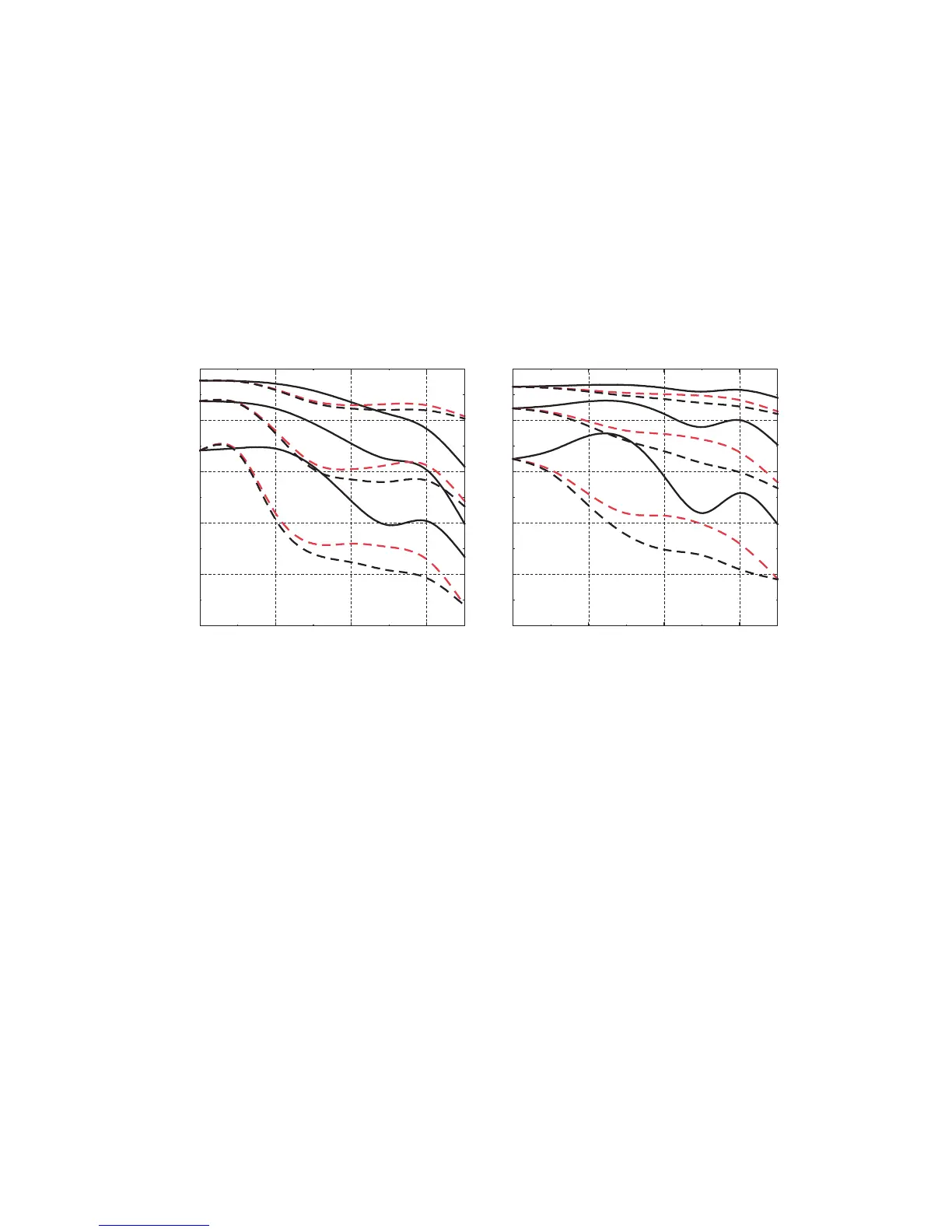Lens Characteristics and Specifi cations 253
entitled “Lenses for Digital Imaging.” DAC can only provide great image quality on a lens that
is optically designed to produce that quality. It cannot produce good image quality from an
inferior lens. The quality improvement that DAC can make is shown in Figure 14-16. The MTF
diagrams show clearly that the HC 35 has excellent quality even without DAC.
The diagram shows that the basic optical design produces excellent image quality even
without DAC. MTF diagrams are discussed in detail in this chapter in the section entitled
“Lens Quality Information.”
Figure 14-16 Digital APO correction. The red dotted lines in the MTF diagrams for the HC 35 mm
show the improvements made by the DAC correction at f/3.5 (left) and at f/8 on the right.
0
0.2
0.4
0.6
0.8
1.0
0 10 20 30
f/3.5
0
0.2
0.4
0.6
0.8
1.0
0 102030
f/8
The HCD 4/28 mm Lens
The designation D indicates that this retrofocus wide angle lens can only be used for digital
imaging not for fi lm photography and only on H3D and H3DII camera models. There are two
reasons for this limitation: as part of the design brief, the lens has been designed with soft-
ware correction that works only with the H3 cameras which transmit the lens data to the
computer and the lens is optically designed to cover the diagonal of the 36.7 49.0 sensor
only, not the larger fi lm format. This allowed producing a lens with an exceptionally large,
practically unknown 95-degree angle of view for digital recording. The 28 mm lens also can-
not be used with the Converter H1.7x. The lens design of the HCD 28 mm lens is shown in
Figure 3-7 in Chapter 3. DAC improves the distortion correction on this lens.
WIDE ANGLE LENS DESIGNS
Biogon and Distagon are wide angle lens designs with two completely different optical con-
fi gurations. The Biogon is an optically true wide angle lens (the classic design that is still used
for wide-angle lenses on large-format cameras) known for its superb corner-to-corner quality

